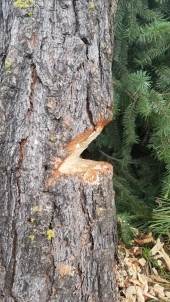
 11
11











Cultivate abundance for people, plants and wildlife - Growing with Nature



 2
2




Instead of trying to re-establish a checklist of plants and animals, as they might have in the past, some restoration practitioners are now focusing on ecosystem functions. For Campbell, that means worrying about pollinators, including birds, bats and insects, in the sky islands. Across the West, spring is thawing earlier and broiling into summer faster, and the region is getting hotter and drier overall, creating a mismatch between periods when pollinators need flowers and the times and places where those flowers are available. “How can I use various plant species in ways to ease that?” Campbell said.
Overall, Campbell’s goal is still to conserve as much biodiversity as possible in the sky islands, where each mountain range has its own unique combination of plants and animals. But she knows she can’t simply reassemble historic plant communities. “Certainly now, we (take) a forward view,” Campbell said. “How is this (species) going to be durable into an uncertain future, where there’s going to be larger, more intense wildfires, and more erosion, flooding, drought, all of those things?”
Cultivate abundance for people, plants and wildlife - Growing with Nature



 1
1




This is all just my opinion based on a flawed memory

 2
2




Ben Zumeta wrote:Thanks for your work and post Daron. I got some good ideas and am impressed by the scale of your projects. I. am working on a restoration/ food forest project at the College ofthe Redwoods in Crescent city down in the southern end of what I consider the northwest (Redwood coast).
Do you have any experience propagating red alder or suggestions for other native northwestern nitrogen-fixing trees? I think we are getting to the point of planting this fall, and am interested in expert opinions on revegetating a very wet in winter 1.25 acre site with natives as much as possible, though of course we are going to grow a lot of Eurasian fruits as well. Thanks again!
Cultivate abundance for people, plants and wildlife - Growing with Nature










If you're readiing this discussion:
Welcome to the cutting edge of sustainable human progress.
 1
1




This is all just my opinion based on a flawed memory

 1
1




Donald Johnson wrote:Wow! You're doing some amazing work!
I'm from Pittsburgh, and our watersheds, infrastructure and stream based ecosystems are in shambles, because of repeated deforestation, old unregulated mining and now fracking. We get new landslides and major floods that ruin homes and block/collapse roadways several times a month. We need an army of green infrastructure engineers and permaculture specialists; doing the same kind of work that you are.
Our city water and sewage authority is starting a green infrastructure certification program that seems very relevant. I'm networking with residents and local officials and the watershed associations to make some restoration projects happen, but it seems that I need help with credentials, certifications and actual experience, as well as access to funding to really move forward on anything.
Any advice on how to move forward to a series of payed gigs and longer term multi-year projects in the field of restoration ecology? The timing seems perfect to get permaculture ideas incorporated into Pittsburgh's long overdue environmental restoration.
Cultivate abundance for people, plants and wildlife - Growing with Nature






 2
2




If you're readiing this discussion:
Welcome to the cutting edge of sustainable human progress.





Cultivate abundance for people, plants and wildlife - Growing with Nature




|
Yes, of course, and I accept that blame. In fact, i covet that blame. As does this tiny ad:
Learn Permaculture through a little hard work
https://wheaton-labs.com/bootcamp
|





